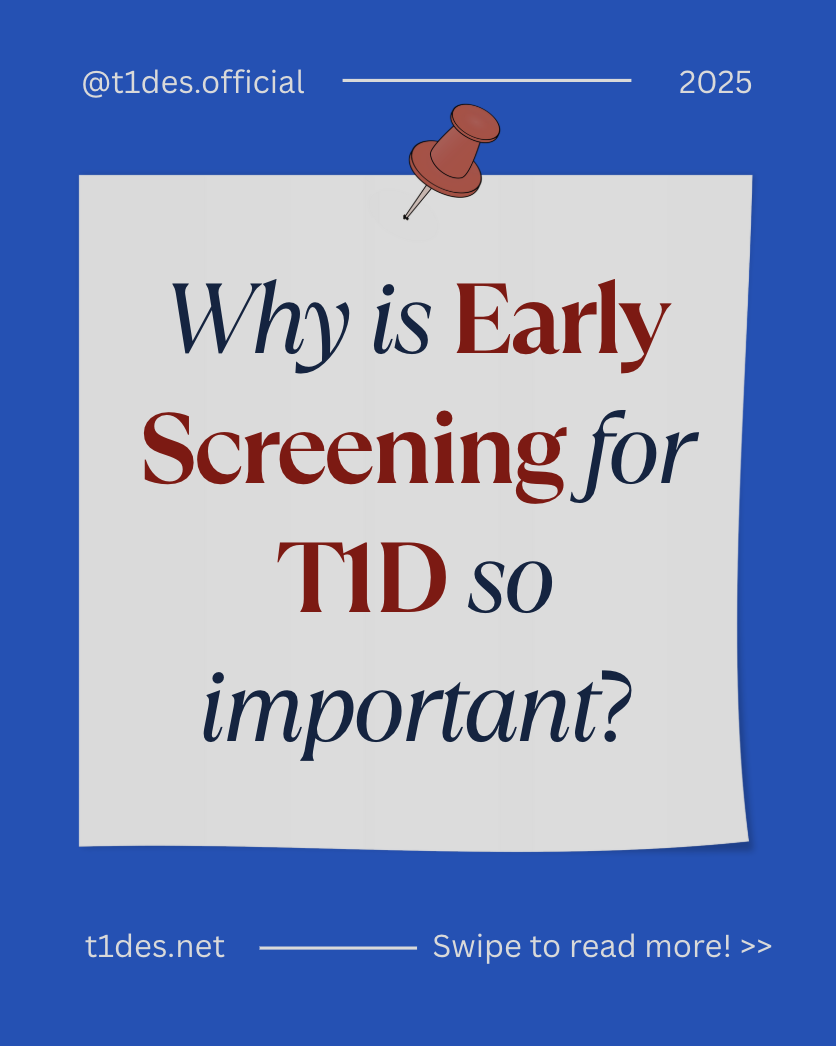Often, T1D is diagnosed through a trip to the ER after insulin resistance has fully developed and a lack of beta cells leaves the body with dangerously high blood sugar levels. A traumatizing ER trip certainly isn’t the best way to be diagnosed with a serious autoimmune disease, and it can be quite a shock for new type 1 diabetics. Additionally, T1D diagnosis at this late stage can be physically traumatizing because of a complication called diabetic ketoacidosis, or DKA. Early screening can help make a T1D diagnosis less harrowing and can even help delay the onset of the disease.
What is DKA?
We have already discussed diabetic ketoacidosis (aka DKA) in previous blogs (see “What is T1D”), but it deserves a second introduction. In short, as your body starts to target beta cells, your insulin level drops. Without insulin, there’s no way for the body to process glucose and it resorts to burning through fat reserves. This produces ketones as a by-product, thus the name “diabetic ketoacidosis”.
Dangers of DKA
In high levels, ketones are dangerous because they make blood more acidic. Increased acidity from ketones has the potential to induce a coma or even be fatal. The longer DKA is allowed to progress, the more serious symptoms can become, ranging from excessive thirst to nausea and vomiting. To make matters worse, these symptoms can come as quickly as 24 hours from when insulin stops being produced, giving little time for reaction.
Be in Control
Knowing about T1D before it progresses to the point of dangerously high blood sugar or DKA allows type 1 diabetics (and their parents and loved ones) more control over their situation. This gives you more time to consider treatment options like TZield (link to last blog post) or insulin pumps.
How to get screened
So how do you get screened for type 1 diabetes? The most conventional method is through a simple blood test that can detect the presence of T1D autoantibodies before they become active. Autoantibodies are proteins that mark insulin producing beta cells for destruction. IAA, GAD65, IA-2A, and ZnT8 are all antibodies that indicate that the pancreas is under attack by the immune system. The presence of 2 or more of these autoantibodies in your blood can be used to diagnose T1D.
But where exactly can you get these screenings? It’s best to first talk with your doctor about options available to you. They can often provide you with a kit or refer you to a lab which does tests for T1D autoantibodies. If you want to take matters into your own hands, check out ASK (Autoimmunity Screening for Kids), which provides free screenings to all kids in the US, and TrialNet, which mails test kits to those with T1D in their family history.
Sources
American Diabetes Association. “Diabetes & DKA (Ketoacidosis) | ADA.” Diabetes.org, 2024, diabetes.org/about-diabetes/complications/ketoacidosis-dka/dka-ketoacidosis-ketones.
Mayo Clinic. “Diabetic Ketoacidosis .” Mayo Clinic, 6 Oct. 2022, www.mayoclinic.org/diseases-conditions/diabetic-ketoacidosis/symptoms-causes/syc-20371551.
“T1D Facts | TRIALNET Type 1 Diabetes TrialNet.” TrialNet, www.trialnet.org/t1d-facts.

Leave a Reply